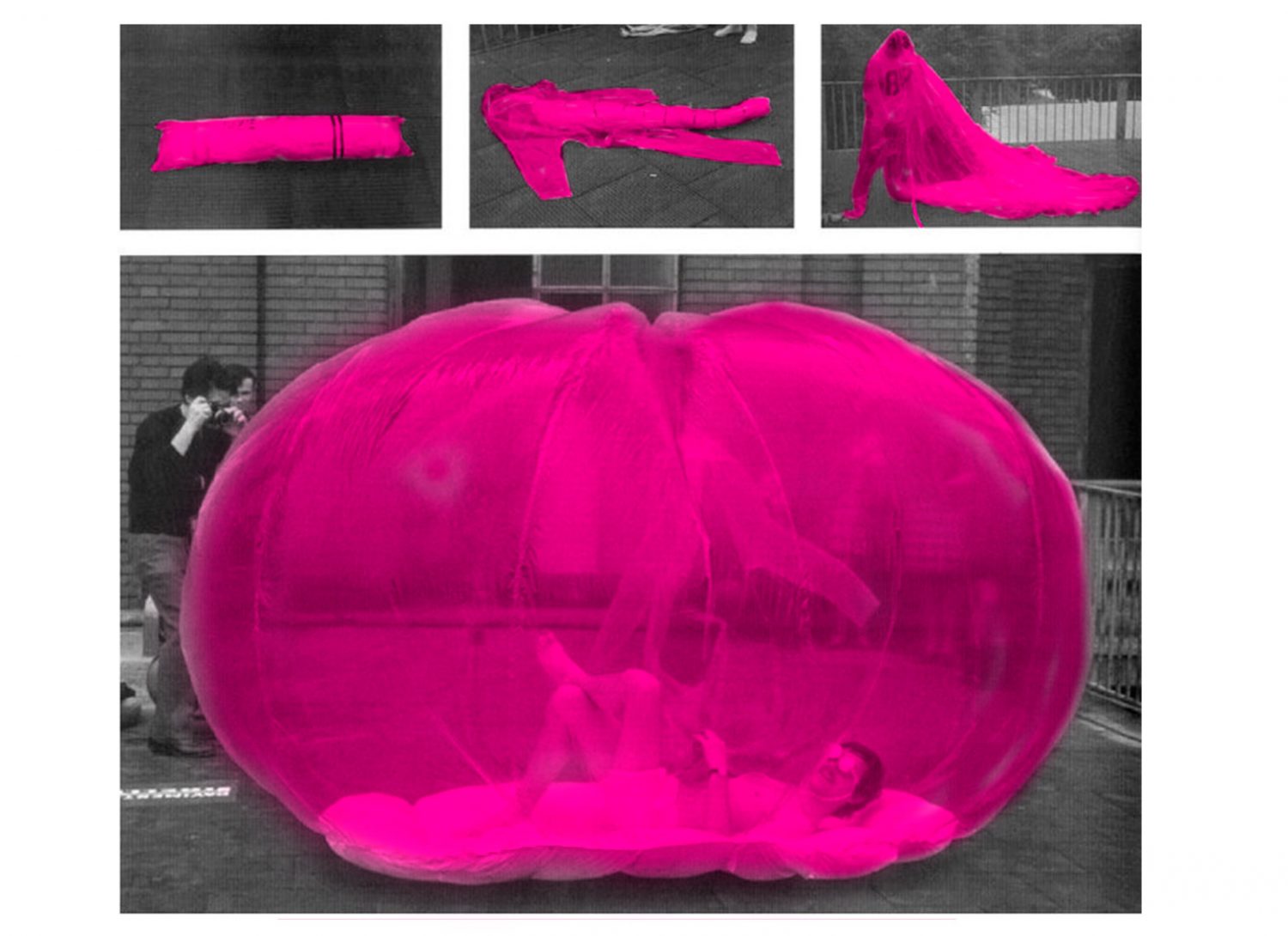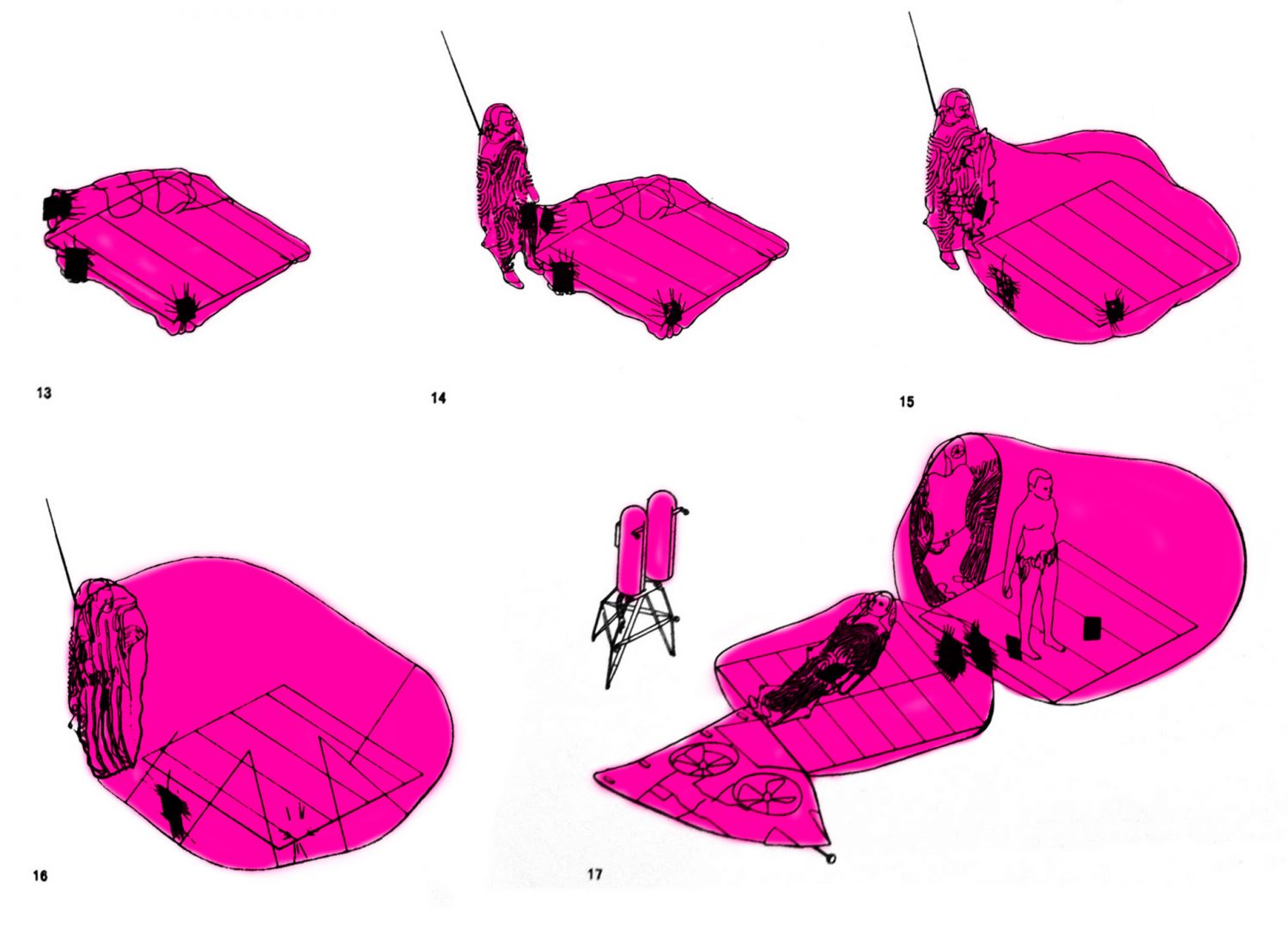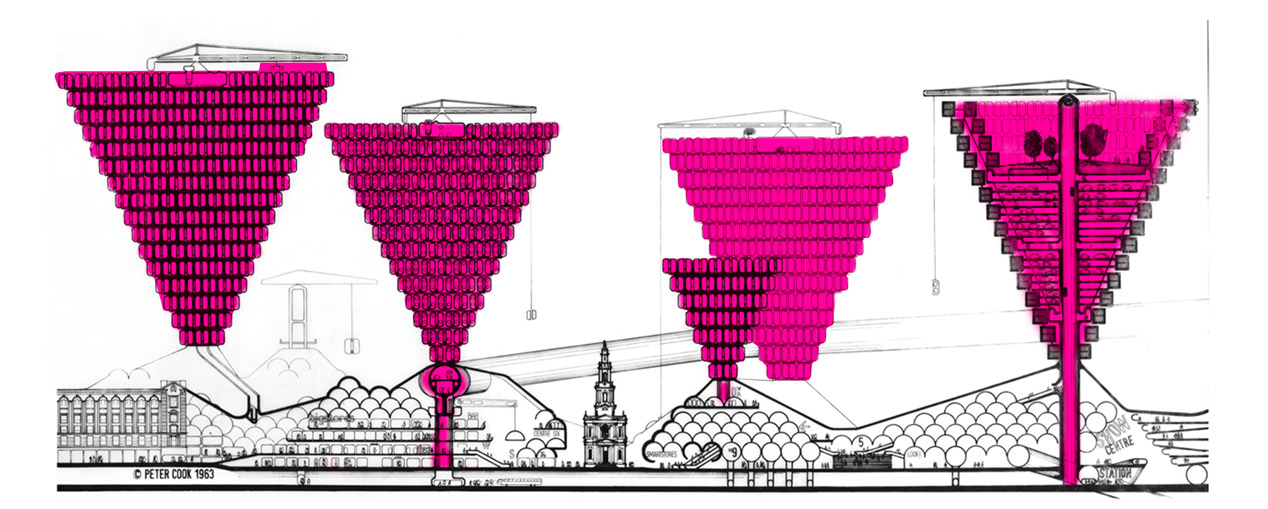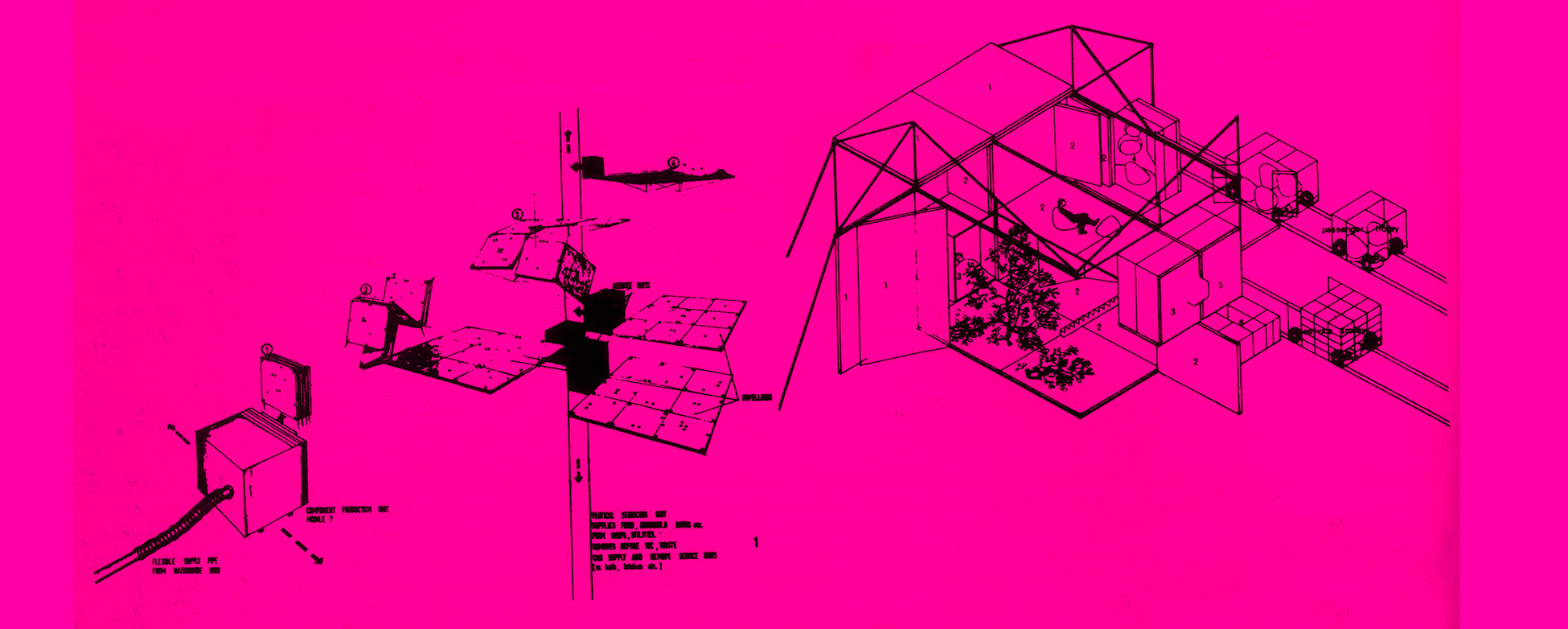INTERIOR
Designs from a Past Future #Archigram
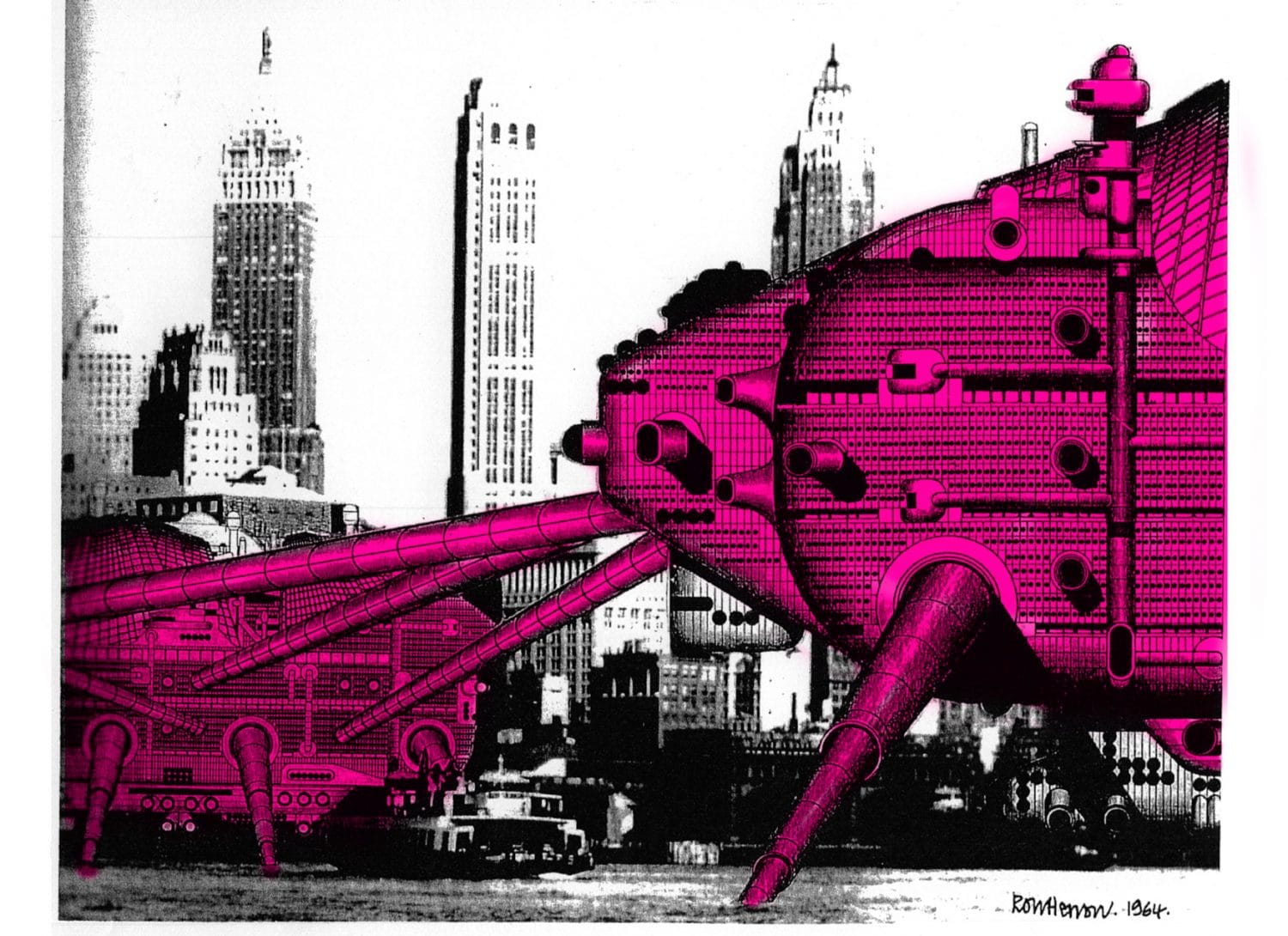
Fascinated by technology and science-fiction, the most remembered designs from the sixties by British group Archigram reflected the life in a future when cities and dwellings behaved like mechanisms. Inside of them, furniture with rounded surfaces and bright colours suggested its making with mould-injected plastic.
A more suitable for the consumer product must offer something better and different than the traditional dwelling; it should be closely related to the design of cars and fridges and directly opposed to the tradition… We are searching for an idea, a vernacular language, something that takes us closer to spatial capsules, computers and expendable containers from this atomic-electronic age.Warren Chalk, Architecture as a consumer’s product, 1967
But Archigram also put their attention and imagination to work in a smaller scale, generating hybrid artefacts of a difficult classification. Michael Webb designed items such as the “Cushicle”, a mixture of a car, a tent and a trailer with different positions that allowed to carry “a complete environment” individually and was part of an urban system of “custom-made bubbles”. He also designed the “Suitaloon”, a suit that contained all sort of devices and could be expanded to form an individual inhabitable surrounding.
Another kind of designs, such as the “Drive-in-Housing” or the exhibitions “Living 1990” and “Beyond Architecture”, were based on the idea of an undetermined place. In “Living 1990”, the inhabitable space was shaped by the different settings of the little “media-trolleys”, robot-like furniture that contained several media appliances. Thus the house was no longer thought as a system of furnished rooms but as a sole neutral space that could be rearranged again and again to host all the different everyday uses.
